Search results for: 'form'
-
 Islamisches Gewicht mit Verzierungen
Islamisches Gewicht mit VerzierungenAntikes Scheibengewicht. Typisch für die ausgehende byzantinische und frühe islamische Zeit. 6. bis 8. Jh. n. Chr. Entsprechend ca. 1/2 Mithqal oder 1/2 Numisma.
Price: on request Massive römische Pinzette aus Bronze, außergewöhnliche Erhaltung
Massive römische Pinzette aus Bronze, außergewöhnliche ErhaltungDie Seiten sind durch ein Rautenmuster verziert. Mit schöner Fundpatina. Flexibel und auch heute noch uneingeschränkt nutzbar.
Price: on request Egyptian scarab amulet
Egyptian scarab amuletNice amulet from the Late Dynastic Period of Ancient Egypt. The scarab was exhibited in an early 20th century private museum.
Price: on request Antikes Gewicht aus Judaea
Antikes Gewicht aus JudaeaRechteckiges Gewicht aus Blei, Fund aus Israel. 55,8 Gramm. Entsprechend 2 Unciae.
Price: on request Antikes Gewicht aus Judaea
Antikes Gewicht aus JudaeaRechteckiges Gewicht aus Blei, Fund aus Israel. 28,2 Gramm. Entsprechend 1 Uncia.
Price: on request Antikes Gewicht aus Judaea
Antikes Gewicht aus JudaeaRechteckiges Gewicht aus Blei, Fund aus Israel. 7,7 Gramm. Entsprechend 1 Pim.
Price: on request Antikes Gewicht aus Judaea
Antikes Gewicht aus JudaeaSchweres, rundes Gewicht aus Blei, Fund aus Israel. 108,3 Gramm. Entsprechend 4 Unciae.
Price: on request Antikes Gewicht aus Judaea
Antikes Gewicht aus JudaeaRechteckiges Gewicht aus Blei, Fund aus Israel. 67,5 Gramm. Entsprechend 10 Sicilici oder 8 Schekel.
Price: on request Islamisches Gewicht aus Bronze
Islamisches Gewicht aus BronzeAntikes Scheibengewicht. Typisch für die ausgehende byzantinische und frühe islamische Zeit. 6. bis 8. Jh. n. Chr. Entsprechend ca. 1/2 Mithqal oder 1/2 Numisma.
Price: on request Kanaanitische Schalenlampe
Kanaanitische SchalenlampeGelbroter Ton mit Mineralablagerungen. Perfekte Erhaltung. Eisenzeit I, 1200 v. Chr. - 900 v. Chr.
Price: on request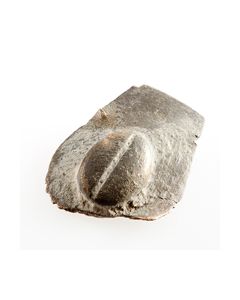 römische Gürteldekoration aus Bronze
römische Gürteldekoration aus Bronzestilisierte Darstellung von Schild oder Vulva. Vermutlich 3. Jh. n. Chr., römische Epoche.
Price: on request Elegant Byzantine silver ring
Elegant Byzantine silver ringSehr schöne und elegante Form. Der Ring aus byzantinischer Zeit ist theoretisch auch heute noch tragbar. Innendurchmesser 18mm bis 19mm.
Price: on request Group of 8 cubic weights from Judea
Group of 8 cubic weights from Judea8 antike Gewichte aus Judaea. Gruppe kubischer Gewichte aus massivem Blei
Price: on request Fläschchen, antikes Glas
Fläschchen, antikes GlasAntikes Glasfläschchen aus römischer Zeit. Fund aus Syrien. Interessanter Typ mit polyedrischem Körper und Kragen. 80mm hoch.
Price: on request Levantinische Bronzefibel mit wunderschöner Patina
Levantinische Bronzefibel mit wunderschöner PatinaEisenzeitliche Fibel, etwa 8. Jh. v. Chr. bis 5. Jh. v. Chr. Vollständig intakt, Nadel noch voll beweglich. Aus alter deutscher Privatsammlung.
Price: on request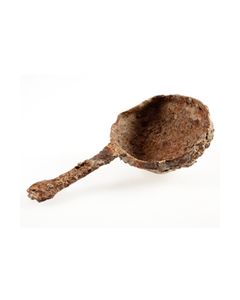 Großer antiker Löffel aus Eisen
Großer antiker Löffel aus EisenMöglicherweise zum Nachfüllen von Öl in Brennlampen verwendet. Teil eines Fundes aus einer Höhle bei Udigram, Pakistan.
Price: on request Massive levantinische Bronzefibel
Massive levantinische BronzefibelEisenzeitliche Fibel, etwa 8. - 5. Jh. v. Chr. Vollständig intakt, Nadel noch voll beweglich. Schöne Patina. Aus alter deutscher Privatsammlung.
Price: on request Antikes Gewicht aus Judaea
Antikes Gewicht aus JudaeaRechteckiges Gewicht aus Blei, Fund aus Israel. 7,8 Gramm. Entsprechend 1 Pim.
Price: on request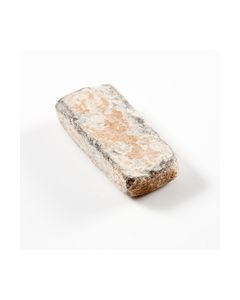 Antikes Gewicht aus Judaea
Antikes Gewicht aus JudaeaRechteckiges Gewicht aus Blei, Fund aus Israel. 11,0 Gramm. Längliche Form.
Price: on request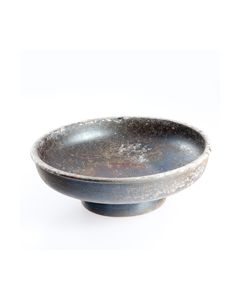 Griechische Schale mit Stempeldekoration
Griechische Schale mit StempeldekorationHell-rote Keramik mit schwarzem Überzug, flach mit hohem Standring. Innen mit Palmetten und Akanthus dekoriert.
Price: on request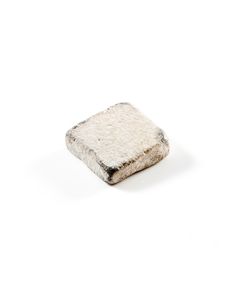 Antikes Gewicht aus Judaea
Antikes Gewicht aus JudaeaQuadratisches Gewicht aus Blei, Fund aus Israel. 26,4 Gramm. Entsprechend 1 römischen Uncia.
Price: on request Kugelförmiges antikes Glasfläschchen
Kugelförmiges antikes GlasfläschchenAntikes Glasfläschchen aus römischer bis byzantinischer Zeit. Kugelförmiger Körper mit eindrucksvoller, dicker Fundpatina und kräftiger Irideszenz. Ca. 67mm hoch.
Price: on request Antikes Gewicht aus Judaea
Antikes Gewicht aus JudaeaRechteckiges Gewicht aus Blei, Fund aus Israel. 25,2 Gramm. Entsprechend 3 Schekel.
Price: on request Antikes Gewicht aus Judaea
Antikes Gewicht aus JudaeaRechteckiges Gewicht aus Blei, Fund aus Israel. 13,5 Gramm. Entsprechend 2 Sicilici. Mit Gussrand.
Price: on request Römisches Unguentarium aus Glas
Römisches Unguentarium aus GlasAntikes Glasfläschchen aus der oströmischen Provinz, 1. bis 3. Jh. n. Chr., Höhe 105 mm. Schöne irisierende Patina. Perfekt erhalten.
Price: on request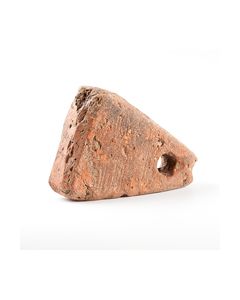 Roman clay loom weight
Roman clay loom weightMassives Gewicht aus Terrakotta mit Öse zur Aufhängung als Webgewicht, aus der römischen Kaiserzeit, Germanische Provinzen, 1. bis 2. Jh. n. Chr.
Price: on request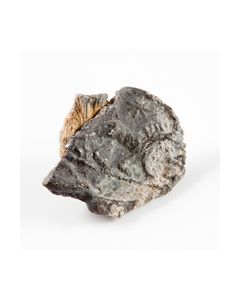 Siegelabdruck mit Resten von Flachs
Siegelabdruck mit Resten von FlachsAbdruck eines Siegels in Blei mit schreitendem Löwen, darüber ein Stern. Hellenistische Zeit, 2. Jh. v. Chr., aus Miletos. Außerordentlich selten ist der erhaltene Rest von antikem Flachs!
Price: on request Applique of the Horus son Duamutef
Applique of the Horus son DuamutefBright turquise fayence. Duamutef is one of the four sons of Horus, well-known from the Canopic jars. He had an important protective function for the dead. Egypt, 8th to 4th cent. BC.
Price: on request Scarab with cartouche
Scarab with cartoucheAmulet from the Late Period. The stamp is in great condition. This scarab is described in the catalogue of Irène Gautier-Vodoz.
Price: on request Scarab with two cartouches of Thutmose III.
Scarab with two cartouches of Thutmose III.Interesting amulet from the New Kingdom or a later period made in archaic style. This scarab is described in the catalogue of Irène Gautier-Vodoz.
Price: on request Scarab from the Second Intermediate Period
Scarab from the Second Intermediate PeriodThe lower side shows a scarab, flanked by two uraeus snakes. 13th to 15th dynasty of ancient Egpyt. This scarab is described in the catalogue of Irène Gautier-Vodoz.
Price: on request Scarab with hieroglyphs arranged in a pattern
Scarab with hieroglyphs arranged in a patternThe lower side is skillfully decorated with hieroglyphs forming a geometric pattern. This scarab is described in the catalogue of Irène Gautier-Vodoz.
Price: on request Scarab with the Red Crown of Lower Egypt
Scarab with the Red Crown of Lower EgyptThe scene can be seen as worship of the Deshret, the symbol of the kings of Lower Egypt during Hyksos times. An interesting piece of evidence of the Hyksos rule over Egypt.
Price: on request Scarab with geometric motive
Scarab with geometric motiveThe lower side exhibits wrapped cords. A nice example of Egyptian art during the Second Intermediate Period. This scarab is described in the catalogue of Irène Gautier-Vodoz.
Price: on request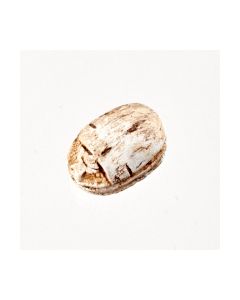 Scarab with lotus motive
Scarab with lotus motiveAncient Egyptian amulet seal with beautiful motive. Six lotus flowers are forming volutes. This scarab is described in the catalogue of Irène Gautier-Vodoz.
Price: on request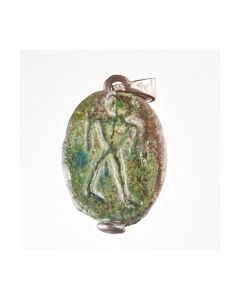 Scarab with standing figure
Scarab with standing figureThe scarab amulet dates to the Late Period. The lower side shows a stading figure, possibly the goddess Neith.
Price: on request

